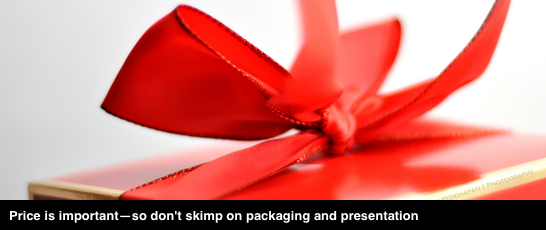Because price matters so much, it makes sense to invest in presenting it as favourably as possible. Despite this, many companies relegate price to a single number at the back of informal proposals and submit only the issuer-supplied pricing forms in formal bids.
A better strategy is to give your price the prominence it deserves.
Price-included proposals
Informal proposals (solicited without an RFP process), and many private sector RFPs, call for a single document that includes both the solution and price. In these cases:
- Include your price in the executive summary. The belief that burying the price quote will force your buyer to read the proposal is false. He or she will read a page or two at most, then flip to the back to find the price. That brings us to the next point.
- Present your price favourably. Use the executive summary to telegraph that your quoted price is logic-based and competitive, and then make the detailed case in the pricing section.
Remember: Almost always, the person who solicited your informal proposal needs internal buy-in for the purchase. Anything you can do to help—and avoid involving other vendors—is worth the effort.
Two-envelope proposals
Include a summary with your price submission in all large RFPs. Do this unless the RFP specifically forbids including additional material in the price binder.
This practice has at least three benefits:
- Creates an executive summary for senior decision makers. Senior people seldom read pricing tables, which are often highly technical and complex. A plain language summary, including visualization, increases your chances of getting senior-level attention to price.
- Sets up a positive evaluation. A well-crafted summary creates context and positions your price as carefully reasoned and organized.
- Makes it easy for evaluators. The team evaluating prices on complex RFPs usually need to prepare a written summary with their recommendations. An ideal way to think of your summary is as cut-and-paste content for evaluators to include in theirs.
Stay client-focused
The goal in your informal proposal is to close the sale without involving competitors. In a formal RFP response, you want to show your price covers all requirements, is reasonable and realistic, minimizes risk and includes trade-offs that best address the prospect’s needs and issues.
In both cases, keep your prospect in mind when presenting your price.


